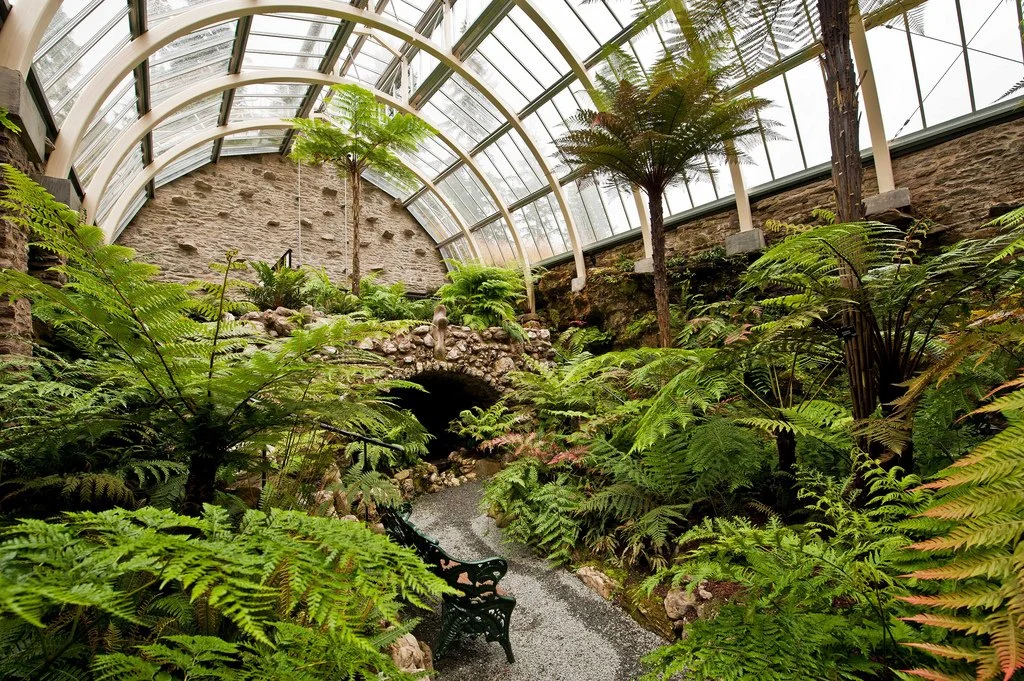Growing ferns in Scotland
My first experience of ferns and gardening came a couple of years ago when I had to shift a well-established one that was starting to dislodge part of my allotment fencing. Anyone who’s ever had the lucky experience of digging up a fern will know that their roots go a lot deeper than expected. It took a good few shifts and a heavy wheelbarrow to get it off the plot!
That experience is probably what’s led to my general apathy towards ferns – until recently that is. Now, discovering that ferns are propagated from spores (little circular structures on the underside of the fronds), that Victorians almost made some species extinct, that Carol from the Beechgrove Garden has them down as one of her favourite plants, and also seeing them in their full glory in a fernery at Benmore Botanical Gardens in Argyll, I’m quite enchanted.
Benmore botanic gardens – the fernery.
This ancient and mysterious plant has been around longer than most, and their leaf forms have been found in fossils which predate the dinosaurs – around 240 million years ago.
The Victorian’s were so intrigued by these ancient plants that they became incredibly fashionable amongst the landed classes, and were grown so prolifically in conservatories, gardens and specially designed ferneries up to the point that some were on the verge of extinction. Fortunately they fell out of fashion and populations were given time to recover.
There is, I think, lots of reasons why ferns are coming back into fashion, and why so many esteemed gardeners love and value them. They do well in Scottish gardens, with most species of tree fern (which grow anywhere up to 6m tall) having a hardiness rating of H4 upwards, and smaller ferns (include royal fern, oak fern and sensitive fern) also being H4-5. Ferns also do well in shady and damp areas where little else thrives, although they do like a well-nourished soil and benefit from natural mulches such as leaf mould.
If you’re thinking of planting ferns, they tend to be hassle free, but will enjoy a soil with plenty of bulky organic matter like leaf mould, shredded bark, garden compost and even gravel or grit on the heavier soils. They don’t like dry conditions, so ensure they stay in moist soil (although in Scotland, that shouldn’t be a problem!)
On a purely aesthetic level they come in a huge variety of shapes, colours and sizes – some with intricate fronds that can be described as feathery, mossy or even leathery. They can be green, red, golden and brown – often depending on the time of year. Ferns provide a graceful backdrop for showier plants too, and offer rich green foliage in the garden throughout the year, from March through to October. Deciduous ferns follow on successfully from early spring bulbs, while evergreen and wintergreen varieties (which retain their foliage in all but the coldest winters) provide structure and ground cover throughout the year.
Because they’ve had so many years to perfect themselves, ferns are also somewhat unaffected by pests and diseases, and require little attention, although they’ll benefit from being cut back from time to time to allow new leaves to form.
There’s a lot to be said for these fascinating and Neolithic plants, and with my initial memory fading fast, I’m increasingly thinking there is space for at least one or two in every Scottish garden!
Some varieties that do well in Scotland include:
Asplenium (spleenwort). Grows to 50-60cm tall. Evergreen, needs reasonable drainage.
Crytomium fortune (Japanese Holly Fern). Grows to 30-60cm. Evergreen. H3-4. Best with winter protection away from coast.
Gymnocarpium dryopteris (oak fern). Grows to 45cm+. H5. Native to Scotland .grows well in rocky or stony soils.

